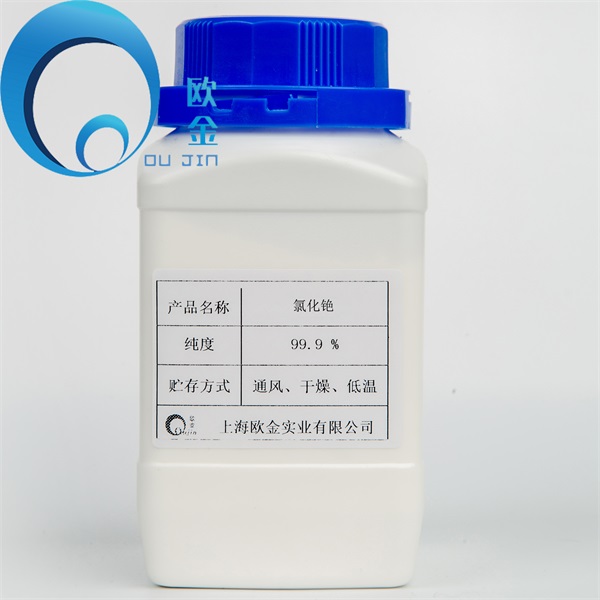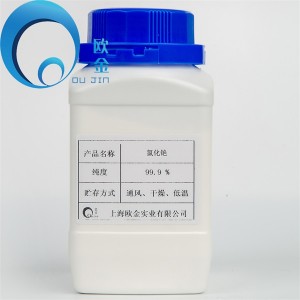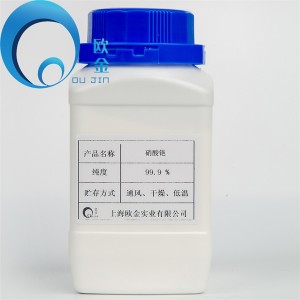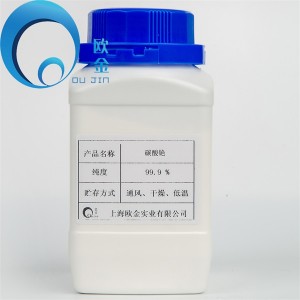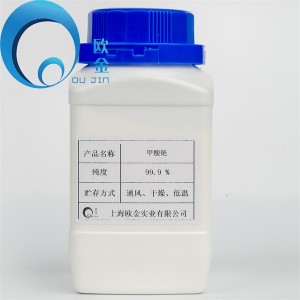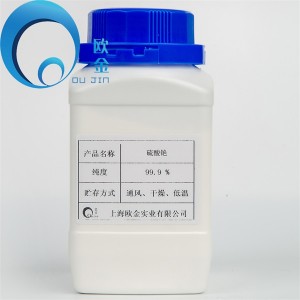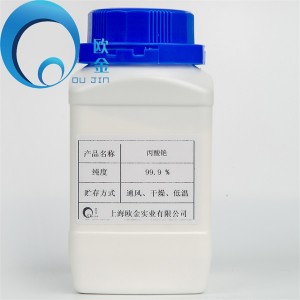
Products
Cesium Chloride
Cesium chloride (Cesium chloride), chemical formula CsCl, molecular weight is 168.36. It is a kind of inorganic salt, colorless cubic crystal, sealed in cool and dry place. Melting point 645℃, boiling point 1290℃, relative density 3.988; Soluble in water, ethanol, methanol, insoluble in acetone. Absorb moisture in the air.
Physical properties: density 3.988g/cm3. Melting point 645℃, boiling point 1290℃, highly soluble in water [162 g (0℃), 259 g (90℃) of 100 g H2O]. Slightly soluble in methanol, ethanol, insoluble in acetone. Absorb moisture in the air. The lattice energy has 659 KJ/mol.
Structure
Below 445℃, cesium chloride crystal cell is a element crystal cell (can be regarded as a simple cubic accumulation of chloride ions, cesium ions fill the cubic void). Compounds adopting this crystal structure include CsCl, CsBr, CsI, TlCl, TlBr and NH4Cl. Higher than 445℃, cesium chloride also has a face-centered cubic structure with a coordination number of 8 [See Material Structure, Co-edited by Sanshi Normal University, Pan Daoai et al., 2nd edition, Higher Education Society, 1989:545].
Usage
Spot analysis of trivalent chromium and gallium. The final extraction of a radio or television vacuum tube. X – ray screen. Radio contrast medium. Manufacture of cesium. Gas chromatography stationary liquid (maximum temperature 450℃, solvent is water), used for high temperature chromatographic analysis of dibiphenyls and tribiphenyls. For microscopic analysis, density gradient centrifugation. Raw materials for the preparation of caesium metal and cesium-bearing single crystals; Analytical reagent; Used for preparing conductive glass; For preparation of solutions for RNA isolation from DNA by density gradient centrifugation. [1]
Composition method editing
1. Dissolve cesium carbonate in a small amount of water. Add hydrochloric acid with relative density of 1.18 slowly under constant stirring and heat reaction:
Cs2CO3+ 2 HCl → 2 CsCl + 2 H2O + CO2
When pH=3, add cesium hydroxide to the solution after a boil for half an hour to bring the pH to neutral. Filtrate shall be filtered, evaporated and concentrated to precipitation of a large amount of crystal , cooled to room temperature, mother liquor shall be separated, cleaned and dried at 100 C, and the product shall be finished.
2. Cesium chloride can be obtained by dissolving cesium carbonate in hydrochloric acid and then concentrating the solution. Cesium chloride with purity of 99.5% is usually obtained and can be used directly. Caesium chloride which is not pure enough may be refined by the following methods.
Dissolve 15g cesium chloride in 100mL water after heating. The 24.2g mercury chloride was stoichiometric dissolved in 25mL 4mol hydrochloric acid. Add the HgCl2/HCl solution to the above solution while it is hot, stir and mix it, and cool it to precipitate CsHgCl3 crystallization. After suction and filtration, collect crystallization, discard mother liquor. Dissolve the crystals in 120mL hot water and cool them out again. For this reason, the recrystallization is repeated for 2-3 times, and the alkali metal can be reduced to less than 0.01%. Finally, the crystallization is dissolved in hot water, and H2S gas is injected to saturate the solution. Then HgS precipitation occurs, HgS are filtered out, filtrate is collected, and the filtrate is evaporated to dry to obtain pure cesium chloride.
Storage and transport
The warehouse is ventilated and dry at low temperature.
Security term
S36/37Wear suitable protective clothing and gloves.
Risk term
R68 Possible risk of irreversible effects.
There may be a danger of irreversible consequences.
Toxic substances

